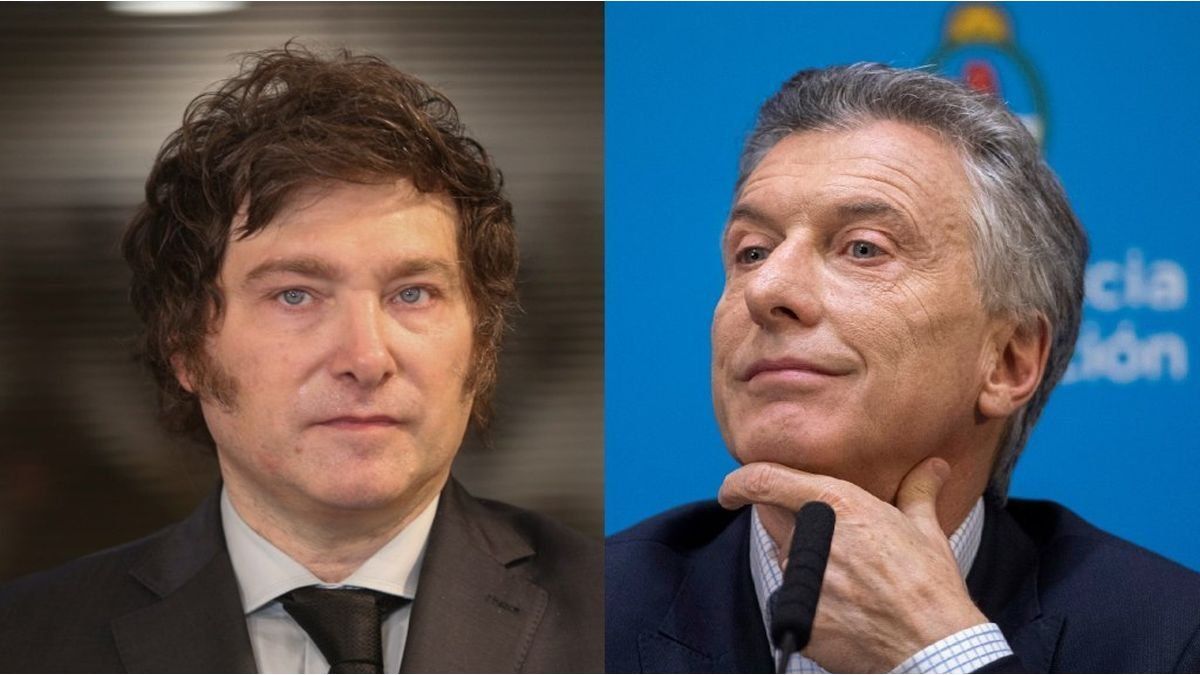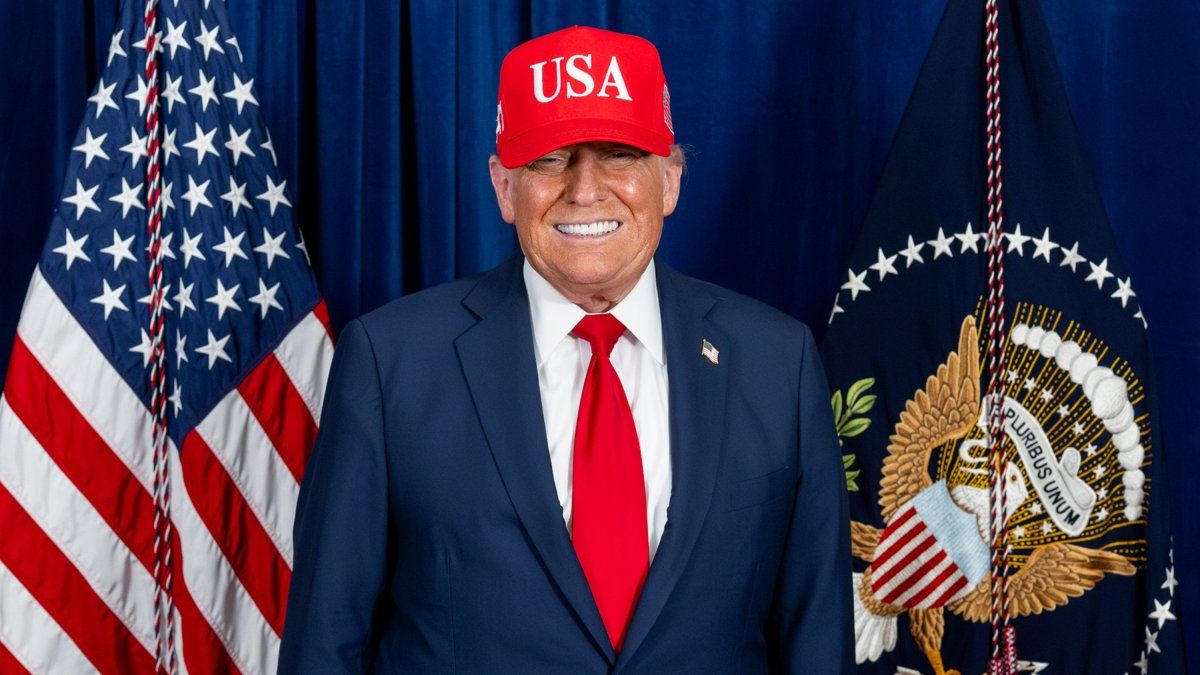“Let us do what the prophet says: I said to myself: I will watch my actions so that I don’t lose my tongue, I will put a gag in my mouth. I kept a resigned silence, I did not speak lightly.” The words are from Saint Benedict, the founder of the Benedictine order, but they are also those of Mauricio Macri. That one, the saint, because in that way he imposed the rules with which his brotherhood must be managed, at all times: this one, Mauricio, because he seems to have come to an idea: What is convenient in electoral terms is silence, especially with the heterogeneous brotherhood of La Libertad Avanza. Almost a rhetorical confinement for an indefinite period of time, archive it.
Acassuso, Borges and the hand of Carlos Rodríguez
A derivative of this is that, despite the sloppiness that arises within the force, The idea of dollarization is moving away. And with her the parents of the child leave. But there is replacement. Or friction. Or, as Borges would write, “fictions.” Precisely someone who has taken up writing is the CEMA economist Carlos Rodríguez, true alma mater of the dollarization along with Emilio Ocampo, and several others. Rodríguez demonstrated in a state of violent emotion due to the effects of the “Acassuso Pact” between Mauricio Macri and Javier Milei. She did it in the last few hours. “The vast majority of people who consult me think that Javier does NOT have an economics team and that Macri is going to put it on later. It would be very bad to reach the runoff with that image“, he stated in his X account. The complaint raised by Carlos Menem’s former vice minister of economy went further: “The longer it takes Javier Milei to announce his Minister of Economy, the less time this professional will have to put together his teams and the less time voters will have to get to know him.” But the interesting thing about Rodríguez’s chained prayer comes now: “They ask us not to appear in the media, that’s why I never appear on TV, radio or newspapers. Only Twitter“.
milei NA.jpg
NA
Shhhh and after: a version
Who asks Rodríguez and the troupe of old economists like Roque Fernández, Emilio Ocampo, etc., not to come out and speak? Answer: It was one of the conditions that Mauricio Macri (im)posed on Javier Milei. The vow of silence in the style of Saint Benedict. It’s up to the entire Milei troupe. “Therefore, given the importance of silence, perfect disciples are rarely given permission to speak, even when it concerns good, holy, and edifying things, for it is written: Talking a lot will not avoid sin“, say the rules of the saint, who is not Macri, nor Mauricio, but Benito.
Warm up when you come in, Sturze
The curious thing is that, in the same hand, always talking about cards, Macri shuffled and gave the wides to Federico Sturzenegger, Luis “Toto” Caputo and Guido Sandleris, to whom Hernán Lacunza also seems to join. Own Sturzenegger made a masterful contortion last week, when he drew a human parabolic and linked, in an article, the prestigious Daron Acemoglu and Jim Robinson with a muddy interpretation of the Milei-oral: a kind of tempatic corpus that could be summarized in the theorem of creative destruction. “Milei is not who we all think he is; Milei is, in truth, someone who, under the aesthetics of wanting to set everything on fire, does so to strengthen institutions, the virtuous tabula rasa”. The interesting thing is that, paradoxically, Sturzenegger ends up praising Milei’s virulence pointing out that “many proposals for Javier Milei They are provocative, they stirred the hornet’s nest and triggered debates that were unthinkable just a few months ago. But it would be a major mistake to confuse this provocation with an attack on the institutions. In fact, nothing protects individual rights and our constitutional framework more strongly than the defense of freedom.” Conclusion: a former central banker who is proud of himself, giving a – labyrinthine – endorsement to the Austrian, who wants there to be no central bank. “Well, to speak and teach is up to the teacher and to be silent and listen is up to the disciple,” Saint Benedict would say.
The flutist and his uncomfortable questions
The pact will have to be ignored Macri-Milei and his first definitions to record that the former president has imposed a “cone of silence” on the libertarian leader. Clearly his decision not to grant more interviews and cancel his media presence is a change in campaign strategy.. Something that is vox populi, the election showed that Milei had a ceiling of 30%. The recommendation – the term is short – of Macri seeks to stop media attention from following Milei, confined in his parents’ house, so that the economic situation can be talked about again. and not from the whims of the economist. Canceled (by Macri himself) the entire ecosystem of Mileist references (Bertie Benegas Lynch, Lilia Lemoine, Ramiro Marra and more…), The aim is to reduce to zero the possibility of rejection in the Cambiamita palate, nothing has happened here.
Strictly speaking, the question would be how does the Bullrichista voter see this new León del Abasto 2.0? How willing is the La Libertad Avanza voter to accompany a pasteurized Milei who endorses public health and education, banks “the caste” and has kept the electric saw under lock and key? The curious thing is that Macri, who did not support Larreta and Bullrich at the time, now seems to want to take Milei’s place because of so much support he wants to give her.
Patricia Bullrich.jpg

Patricia Bullrich with Mauricio Macri, Horacio Rodríguez Larreta, Luis Petri and other representatives of Together for Change.
Mariano Fuchila
Dollarization and expensive dollar, Mondino-Laspina-Kiguel
A small chapter belongs to the economist Diana Mondino. Escaping Macri’s silence ordinance, The CEMA economist ratified dollarization and added that “we have de jure dollarization”although perhaps he meant “de facto”. But while Guillermo Francos – Milei’s potential Interior Minister – said that “dollarization is inalienable”, Luciano Laspina, part of the libertarian’s teams, minimized this issue by maintaining that any attempt “will have to be submitted to Congress.”.
The economist expressed himself along these lines Miguel Kiguel, who, speaking about dollarization, said that “it is a fantasy that is in Milei’s head,” but that “it cannot be done” because “it would have to be at a very high exchange rate.”. Kiguel maintained that the decline in financial dollars responds to the “gradual approach” that Minister Sergio Massa has and that “the dollar at $1,100 or $1,200 is a totally runaway dollar, which has nothing to do with a bad scenario without dollarization”. Finally, the economist argued that “the most complex thing that Argentina has to solve” is “to reverse the reserves, correct the exchange rate and, in the latter, inflation does not escape in the attempt.”
Rubinstein’s book revisited
Sometimes the best way to move forward is to go back. We said it in this column about four weeks ago, when we postulated that, in terms of exchange rates, the formula that Secretary Gabriel Rubinstein is looking at with interest is, in the future, that of analyze the possibility of an exchange rate split, perhaps two or three versions, one commercial and the other financial. Something like this, they think in Economy, could be the recipe to get out of the delicate financial situation that the country is going through. A kind of reversal in the basic imbalances, but gradual.
One step, back, at a time. No shock. In fact, it is happening. Aside from the inflationary issue, the hopscotch that the Economy team drew on the floor of the ministry’s office has its “sky.” If asked, the UP candidate could say that this pendulum passed through the infernal ninth circle of Dante in the days before the election when the future dollar market was considering a jump towards the end of the year, to a brutal cut in those estimates after the election.
There was also a strong retraction in the stock market, which had been taken as a hedge by investors to get through the electoral chapter. A vital witness to these journeys has been the dollar. In its blue version, with a drop to $900. Perhaps more significant in Cash With Settlement (CCL), a kind of anchor that promises to continue at increasingly lower levels, at least in the short term. The MEP dollar closed at $840 and the Cash Dollar with settlement at $883.
Why does the dollar have more to go down than up?
Because the Government has doubled the exchange rate once again, in this case, for exporters, the 70/30% formula, which serves to settle a part of sales abroad by canceling through the CCL. It’s a theoretical dollar of $500. In Creole, it means that the Government thus ensures greater supply through this means. They are temporary measures, but they invariably imply two things: splitting as the chosen formula and a recognition of the devaluation trend that allows for greater liquidation. It is estimated that some US$1.8 billion could enter through the CCL in four weeks, a lot of supply that would keep the rest of the quotes well supplied.
Source: Ambito




